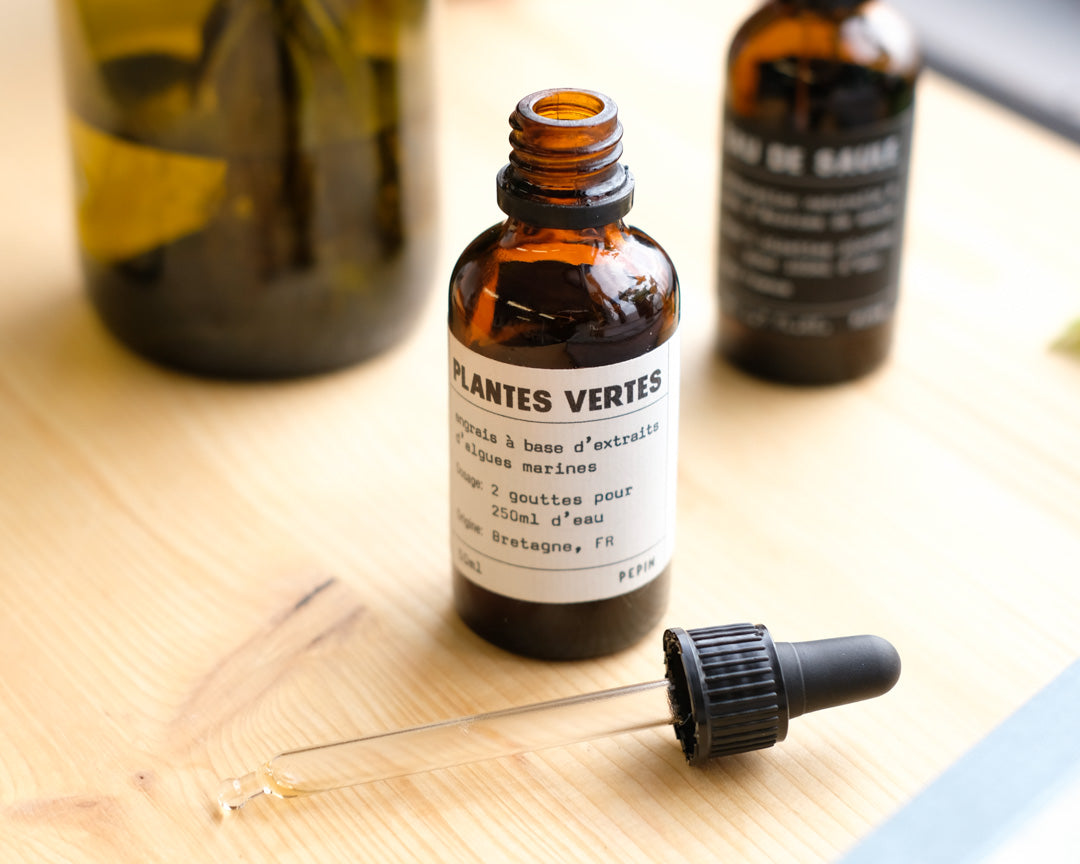Knowing when it's time to feed your houseplants, and which houseplant fertilizer to use, is a challenge for even the most experienced houseplant collectors.
Irrigation, light or pest problems can be resolved by reacting to a finding, but it is much more difficult to know when our indoor plants need fertilizing. There is no clear signal, except perhaps slowed or stagnant growth, but it is difficult to measure.
So instead of waiting for a signal from the plant, you should take matters into your own hands and imagine fertilizing as a marathon. A houseplant fertilizer is used on a schedule based on their growth cycle. And this must mainly follow the seasons. Each houseplant has slightly different needs when it comes to the amounts and frequency of fertilizer applications, but there's no need to over-complicate the process.
The vast majority of common houseplants have similar enough fertilizer needs to make a schedule that works for just about any plant without risking over-fertilizing them. Some indoor plants are more greedy than others, it's true. And the best way to solve this problem is to choose a fertilizer whose composition will be adapted to the family of the plant (succulent, epiphyte, green plant, etc.).
Here is a suggested fertilization program for the most common indoor plants. It is based on the seasonal growth cycle of plants which, despite being indoors where temperatures are more constant, influences indoor plants in a similar way to outdoor plants.
Fertilize your houseplants in the spring
You can start fertilizing your houseplants about 8 weeks before the last spring frost. As in the vegetable garden, the ice saints (which take place around May 11, May 12 and May 13) are an ancestral landmark that has proven its worth.
This means starting to apply fertilizer in mid-March. At this time, the days begin to lengthen noticeably, and houseplants go from a semi-dormant state to a period of active growth.
If you use a liquid fertilizer, apply half the recommended dose, once a month until summer. Indoor plants will thus be fed at a time when they are only preparing for active growth and do not yet need large amounts of nutrients to support intense photosynthesis or flowering.
Fertilize indoor plants in summer
When summer arrives, it's time to switch to a more regular schedule of houseplant fertilization. The frequency of summer fertilizer applications depends on the type of fertilizer you use.
Natural liquid fertilizers are applied more frequently, every two weeks, or weekly for fast-growing plants. Granulated products are to be used less frequently, about once every month or every two months. Slow-release houseplant fertilizers break down slowly and release their nutrients in small amounts, over a long period of time. A single application of most of these products lasts three to four months.
Follow this schedule whether or not you move your houseplants outside for the summer. Indoor plants are in a state of active growth when summer light levels are high, whether they are exposed to the constant temperatures of a home environment or the vagaries of a patio or deck.
Fertilize indoor plants in the fall
About 8 weeks before the first expected fall frost, reduce the amounts and frequency of your fertilizers. This means that from mid-August you can halve the amount of fertilizer and extend the interval between two fertilizations.
n entering dormancy, plants will concentrate on root activity, to accumulate nutrients for the following year. The needs are nevertheless lower and they will be able to absorb the residues present to balance your substrate.
Fertilize indoor plants in winter
Most houseplants are not in a state of active growth during the winter and therefore should not be fertilized. There are a few exceptions to this rule. Some plants, such as orchids for example, can stay in bloom all winter long if they have enough nutrients and light. In this case, an application of a half dose of liquid fertilizer in the middle of winter can be envisaged.
The case of repotting: If you have just repotted your plant with good quality soil, you can refrain from applying fertilizer during the first 1 or 2 months.
Outside temperate climate: This calendar works assuming you live in a temperate climate. In a climate that doesn't experience regular winter frosts, continue to fertilize your houseplants throughout the winter, but do so at half the amount and frequency of your summer applications. Again, this is due to light levels more than temperatures. And if you live in a tropical climate, where it's always hot, keep fertilizing your houseplants in the summer all year round.


